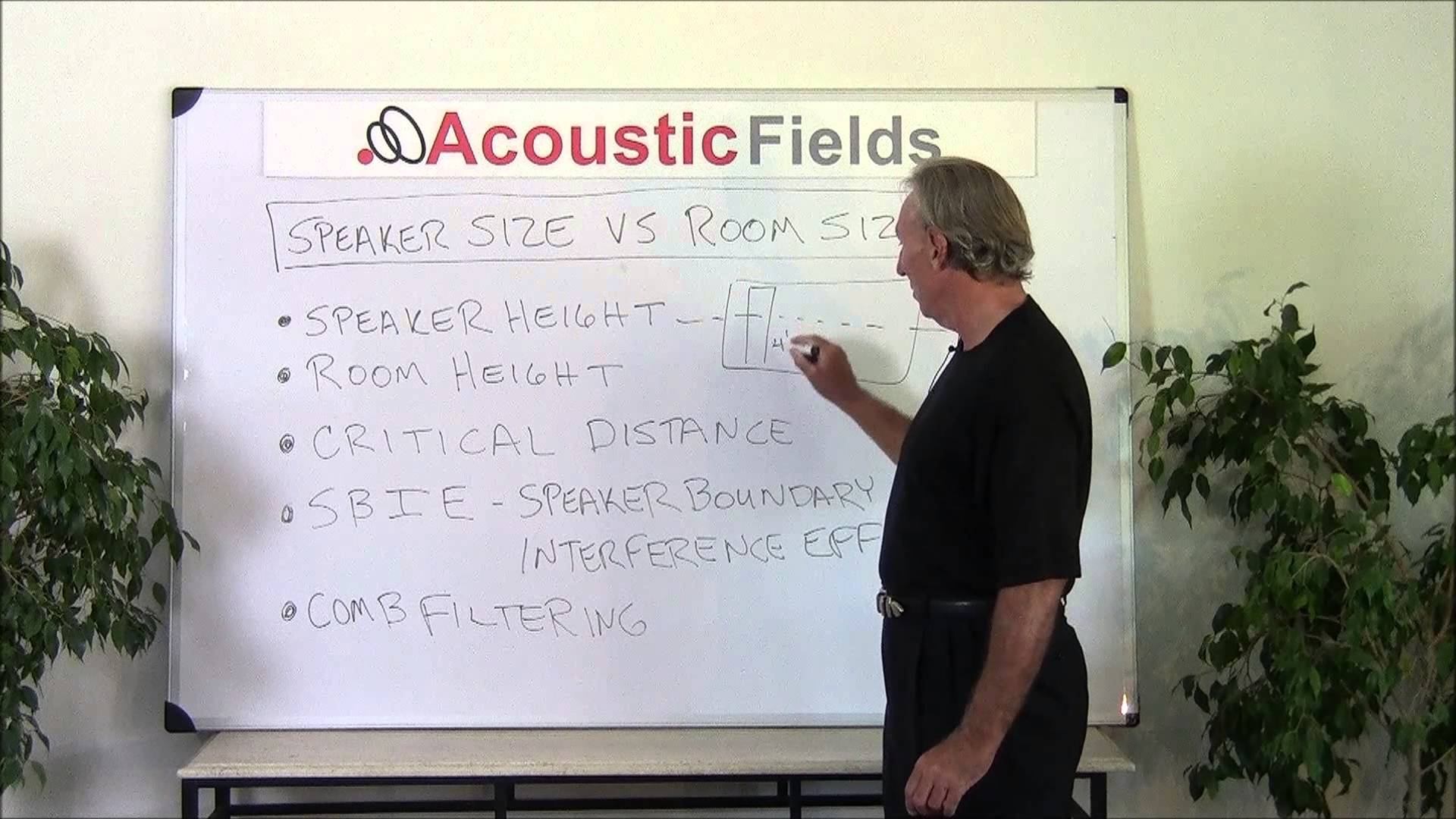Working out how to choose the correct speaker for the room you are going to be using it in involves many factors. All of these factors must be considered when selecting a loudspeaker for your listening room. We are just referring to two channel sound sound with a left and right channel speaker. We need to consider low frequency driver diameter, total speaker size and amplifier.
The size of the low frequency driver must be “matched” to the room volume. Why room volume? Because room volume or in this case, lack of room volume, is critical to the pressure created by the diameter. In other words, you must match the volume of the room to the woofer diameter. A 10″ woofer will produce a certain amount of energy into the room. A 12″ woofer will produce proportionally more sound energy into the room. A 15″ even more. Where can all of this low frequency pressure go but into a room with a certain volume. If the volume of the room, or its ability to handle low frequency pressure amounts, is too small you will receive all types of low frequency issues. With excess, low frequency energy into the room your middle and high frequencies will be blurred if you are lucky or smothered which is usually the case.
In this video our Chief Acoustic Engineer, Dennis Foley, explains the concept of room size to speaker size in greater detail.
How To Choose The Correct Speaker – Physical Size Important
The physical size of the loudspeaker must also be considered. Is the width of your room wide enough to accommodate a wide dispersion sound pattern from a tall cabinet? If it isn’t, you have primary reflections that will bounce off the side walls and interfere with the direct, wanted sound from your loudspeaker at the listening position. You must have the correct width distance in the room for the desired speaker height in order to achieve a balance between direct and reflected energy. If you have a tall, tower type speaker and a lower ceiling height, you will have a comb filter effect created between the energy out of the top of your speaker and the ceiling. This comb filter effect blurs and smears your middle range frequencies where your vocals and instruments are.
The output of your power amplifier must be adequate to cover the resistance produced by the speaker and speaker cable. The energy from the amplifier must flow through the speaker cables no matter what the load resistance range is. Your amplifier must have enough reserve energy to cover transients in your music presentation. If you hear a bass drum followed by a flute, you must be able to hear the attack and decay of the bass drum and the attack and decay of the flute. All instruments must be heard whether they are played together or separately. Bass energy output needs from your amplifiers should not rob energy from the middle and high frequencies. Bi- amplification or tri- amplification will solve these issues quickly.
In this video Dennis also discuss’ side wall reflections which you also need to factor in to your buying decision.
Choosing the correct loudspeaker for your two channel listening room must be approached as a total decision involving the room volume and dimensions, the desired speaker height, and even the amplifier power levels, damping, and dynamics.
Seek Expert Advice
I hope that helps solve the problem you are having. Please message me at info@acousticfields.com if you have any questions as I am always happy to help. If you want more to learn more about room acoustics please sign up for our free acoustic video training series and ebook. Upon sign up you will instantly have access to a series of videos and training to help improve the sound in your studio, listening room or home theatre.
Thanks
Mike







